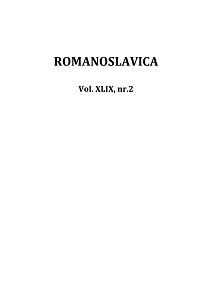Cronicile slavo-române din secolele al XV-lea – al XVI-lea. Consideraţii referitoare la stilul letopiseţelor slavo-române
The Slavonic-Romanian chronicles from the 15th - 16th centuries. Considerations regarding the style of Slavonic-Romanian chronicles
Author(s): Crina BocşanSubject(s): Cultural history, Syntax, Eastern Slavic Languages, South Slavic Languages, Higher Education , 15th Century, 16th Century, Philology
Published by: Editura Universităţii din Bucureşti
Keywords: Slavonic-Romanian chronicles; 15th-16th centuries; style of Slavonic-Romanian chronicles;
Summary/Abstract: The Romanian historiography in the Slavonic language is a major part of the Romanian culture from the fifteenth and sixteenth centuries. The South-East European context bears the seal of the political and cultural relations with the neighboring countries and the Byzantine- Slavic cultural assimilation. The manuscripts copied in our monasteries have been widely circulated as shown by the numerous manuscripts preserved in libraries throughout our country and abroad. Among these many historiography writings of Byzantine-Slavic can be found. The Byzantine chronicles were identified in Slavonic translation or adaptations, included most often in the so called “sbornice” of a miscellaneous content; our original historiography has been developed and flourished both at the princes’ court and in the cultural centers near monasteries, issued from the pen of highly educated scholars, with deep knowledge of the history books and treaties of southeastern Europe. The chronicles of XV-XVI centuries show the characteristic features of the manuscripts from the sixteenth century. Their language is that of cultivated and educated writers, with a good knowledge of both Slavonic and Romanian, although the word endings are sometimes mixed up. Their rich and varied vocabulary is based on medium Bulgarian elements, originating from Old Slavic with Eastern Slavic and Romanian elements. The sober narrative is a characteristic feature of the message about the national being of the Romanian people, and its state north of the Danube. This was a social and political imperative, in the context of the historical events inside and outside the country.
Journal: Romanoslavica
- Issue Year: XLIX/2013
- Issue No: 2
- Page Range: 27-30
- Page Count: 4
- Language: Romanian

